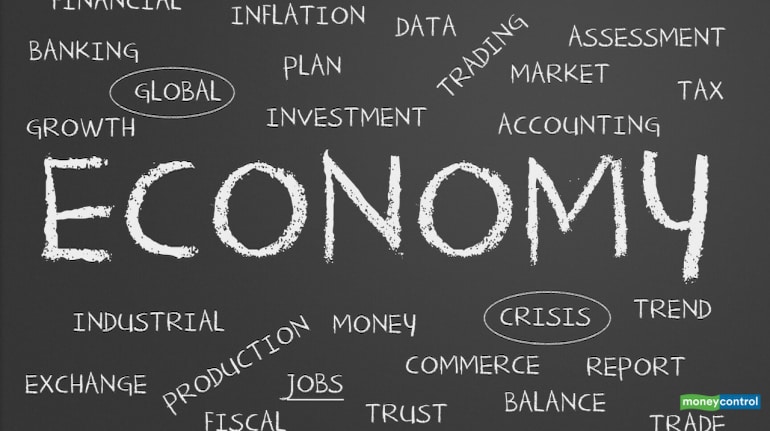



Kedar S Kadam
Well 'when it rains, it pours'. At a time when the global economy was looking for signs of revival from the downturn caused by US-China trade war, geopolitical uncertainties, declining commodity prices and slowing consumer demand, yet another 'downturn' came knocking the doors.
The coronavirus pandemic has severely disrupted the flow of goods and people, stalled economies and put a considerable ridge in global gross domestic product for months to come.
The global economic slump contagion is also spreading as fast as the disease itself, fading the prospects of global economic recovery. The evidence is mounting that March marked the start of a global recession, with WTO estimating a large decline in global trade between 13-32 percent, (13 percent witnessed during great recession of 12 years ago and pessimistic plunge of 32 percent during the Great Depression of 1930s).
The breadth of the collapse is beginning to appear in the initial filter of economic data across the world, revealing a contraction of trade, withdrawal of business investment, shrinking consumers and surging unemployment across industries.
Given escalating challenges, the World economy is likely to witness tough time in coming quarters, however to compare it with 1930 great depression will not be fair in our view. Even if the situation deteriorates further from here we do not expect it to be prolonged for longer and expect a gradual recovery.
Today the global economies and Central banks are much more resilient and stronger than ever, the banks are well capitalised, there is adequate money supply. The economic engine remains in a decent shape, the pandemic has interrupted the fuel supply to the engine, if it is re-established properly; a gradual rebound is possible.
In the year 1930, Great Depression was the worst economic downturn in the history of the industrialised world, which lasted from 1929 to 1939. The crisis began after the stock market crash of October 1929, which sent Wall Street into panic and wiped out millions of dollars of investors. Over the next several years, consumer spending and investment dropped, causing steep declines in industrial output and employment as failing companies laid off workers.
However, in the present scenario, given the efforts governments across the globe are making, we believe that the virus will eventually be contained but timing the same today and quantifying the economic impact is quiet difficult.
We believe the global economy is in a temporary deep freeze and once the virus is contained, enabling people to return to offices and shopping malls, life will snap back to normal. In the worst case, we see the pain lasting until CYQ2 2020 and expect a gradual recovery beginning CYQ3 2020.
Having said this we strongly believe that everything depends on how long the pandemic lasts, if the spread of the disease gets restricted in H1 2020, we could see a possible rebound beginning second half of 2020. In an alternative scenario wherein the spread escalates further, it's certainly going to be the mother of all financial crises.
For years, a segment of the economic belief advanced the idea that globalisation came with a built-in insurance policy against collective disaster.
So long as some part of the world economy was growing, that supposedly moderated the impact of a downturn in any one country. The global recession that followed the financial crisis of 2008 beggared that thesis.
The current downturn presents an even more extreme event, a worldwide emergency that has left no safe haven, including India and other emerging/ developed markets.
Following the globally adopted measures, the Indian government too announced a nationwide lockdown for 21 days, though necessary but for an economy going through a demand compression, growing unemployment, and declining industrial output and profits for several quarters, supply-side restriction could have a severe impact, risking growth prospects and social /economic well-being of a large population.
The nation's GDP has consistently fallen since Q4’FY18 except for Q4’FY19. The uptrend in Q4’FY19 GDP was attributable to downward revisions to growth rates in first three quarters of FY19 by National Statistical Office (NSO).
According to latest data from CMIE, the contraction in FY20 is 12.9 percent, worse than the 6 percent contraction registered in 2008-09, following the global liquidity crisis. From manufacturing to mining, construction to electricity, every major sector reported a contraction in gross value added.
The impact of a complete social and economic shutdown is difficult to quantify, however it is likely to be as deep or more than 2016 demonetisation or the 2017 GST roll out. We do not expect India to stay immune to the COVID-19 shocks and the economy will be under extreme pressure in next few quarters.
The author is DGM & Head of Research at Cholamandalam Securities.
Disclaimer: The views and investment tips expressed by investment expert on Moneycontrol.com are his own and not that of the website or its management. Moneycontrol.com advises users to check with certified experts before taking any investment decisions.
Discover the latest Business News, Sensex, and Nifty updates. Obtain Personal Finance insights, tax queries, and expert opinions on Moneycontrol or download the Moneycontrol App to stay updated!
Find the best of Al News in one place, specially curated for you every weekend.
Stay on top of the latest tech trends and biggest startup news.